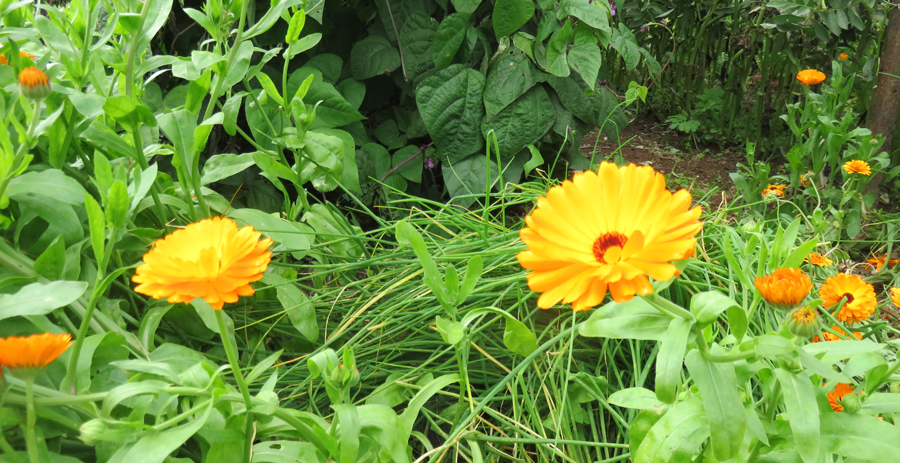Last week our Rocket Gardener wrote a post on companion planting and we received several enquiries about how to use companion plants as a result. So…here’s a little introduction for those of you who would like to find out more.
YOU CAN USE COMPANION PLANTS FOR:
- Attracting natural predators – for example, marigolds and tagetes can be used anywhere that aphids and and whitefly are a problem as they will attract ladybirds and lacewing which will help to keep whitefly and aphids at bay.
- Providing food for pollinators – a lot of companion plants tend to flower for a long time over the spring and summer months, and often into autumn too. They provide valuable food for pollinators for a long time, and it’s a great thing to attract more pollinators into your veg patch. More pollination = more tomatoes/beans/courgettes/squash etc etc
- Deterring pests – Strong scents can deter pests, so planting companion plants alongside vulnerable crops can help. For example, mint can help wherever you have problems with flea beetles whilst onions/chives/garlic can deter carrot fly from carrots.
- Acting as a sacrificial crop – in this instance, companion plants are planted to attract pests away from vulnerable crops. The most obvious example of this is where you would plant nasturtiums close to brassicas to attract cabbage white butterflies. In doing so, the butterflies lay their eggs on the nasturtiums, meaning that when the caterpillars hatch they eat the nasturtium leaves rather than brassica leaves.
SOME IDEAS:
Chives and Garlic Chives – Plant amongst carrots to deter carrot fly. You could also plant rows of spring onions or onions between rows of carrots for the same effect.
Nasturtiums – Plant a clump near brassicas. They’ll act as a sacrificial crop protecting brassicas from cabbage white caterpillars.
Marigolds and Tagetes – Use anywhere that aphids and and white fly are a problem, (for example, in amongst your tomato plants) as they will attract ladybirds and lacewing which will help to keep white fly and aphids at bay.
Mint – Can deter flea beetles (lots of leafy veg are affected by these bugs which make lots of tiny holes in the leaves).
Chamomile, Lavender, Borage & Hyssop – attract bees and other pollinators. Plant them in and around your beds.
Basil – in greenhouse can help deter aphids
Dill & Fennel – can attract ladybirds which in turn feed on aphids
Red Campion – can deter blackfly away from your broad beans

